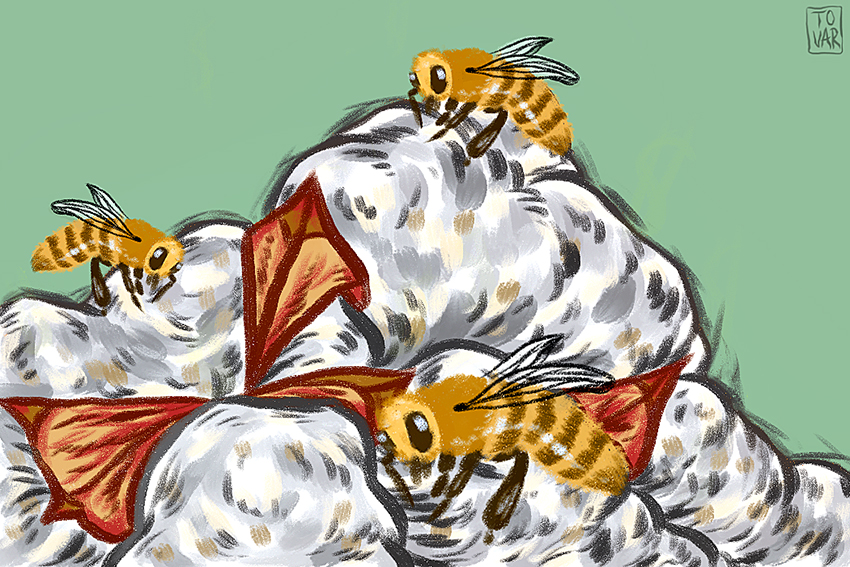Rarely do people think about the economical and environmental value of pollinator species, such as bees, but UT researchers recently showed that these tiny workers have a lot to offer.
Shalene Jha, UT integrative biology assistant professor, Sarah Cusser, a graduate integrative biology student, and John Neff, director of the Central Texas Melittological Institute, studied the relationship between pollinator insect species and the landscapes they inhabit.
“We found that there was this really clear relationship between the amount of natural habitat in a farm and the diversification of pollinators inhabiting the farm,” Jha said.
The team investigated how having a diverse pollinator species population impacts cotton yield and how certain landscapes influence the variety of a group of pollinators. They focused on cotton because of pre-existing beliefs that the plant does not need pollinators to produce. Unlike other crops, such as watermelon and almonds, which depend on pollinators to produce fruit, cotton doesn’t require pollinators because it can self-pollinate.
The trio discovered that increasing diversification among pollinating species in South Texas leads to an increase in the amount of cotton produced. Creating diversity among pollinator species increases yield because it allows more pollen to be distributed among plants.
Jha said that an abundance of male gametes, the reproductive cells of plants that are transferred through pollen, produces better and more fertilized fruit. Cross-pollinated cotton plants produce heavier bolls (the white pieces that hang off the plant) with a higher seed count than self-pollinated cotton plants.
“Having a natural habitat really helps and makes a big difference in terms of pollinators’ habitats, whether it makes up 3 to 5 percent of the total area,” Jha said.
Natural habitats are areas not used for farming, ranching or other commercial uses that require large amounts of natural vegetation to be removed. These natural habitats provide a larger variety of food sources for pollinators, which attracts more of them to the area, diversifying and boosting a pollinator’s population count.
Jha said that cotton farms are typically “sterile landscapes” void of trees, flowers and other flora that would encourage biological diversity.
This research revealed that increasing the amount of natural habitats at cotton fields and thus diversifying pollinator species could generate an additional $1 million in annual revenue for Texas.
According to the National Cotton Council of America, bees currently pollinate 80 percent of agricultural crops in the United States and help generate over $27 billion in annual revenue. Texas accounts for 25 percent of cotton production in the United States and South Texas produces 15 percent of all Texas cotton.
The data used in this research was gathered from multiple surveys and experiments from 12 areas across South Texas. Jha and Cusser collected over 841 pollinator species, which included bees, wasps and butterflies.
The researchers provided recommendations about land management that could be implemented to foster growth of the pollinator species. Cusser said farmers or landowners could provide forage and nesting habitats, introduce flowers and other flora into areas around their land, reduce pesticide usage while the pollinators are out during the day and restore or add natural habitats through the landscape.
Cusser said she plans to continue researching what resources the bees need and their nesting habitats in the regions.
Jha said that the benefits of diverse pollinators are not only monetary. A better overall ecosystem emerges when pollinators focus on pollinating plants in their region. Over time, plants will help sustain the ecosystem through water storage, water filtration and soil management.
“Farming is a challenging career and it’s hard for farmers to meet their livelihood needs,” Jha said. “Finding solutions for them to do their job better while improving their treatment of the earth was another important discovery of this research.”















